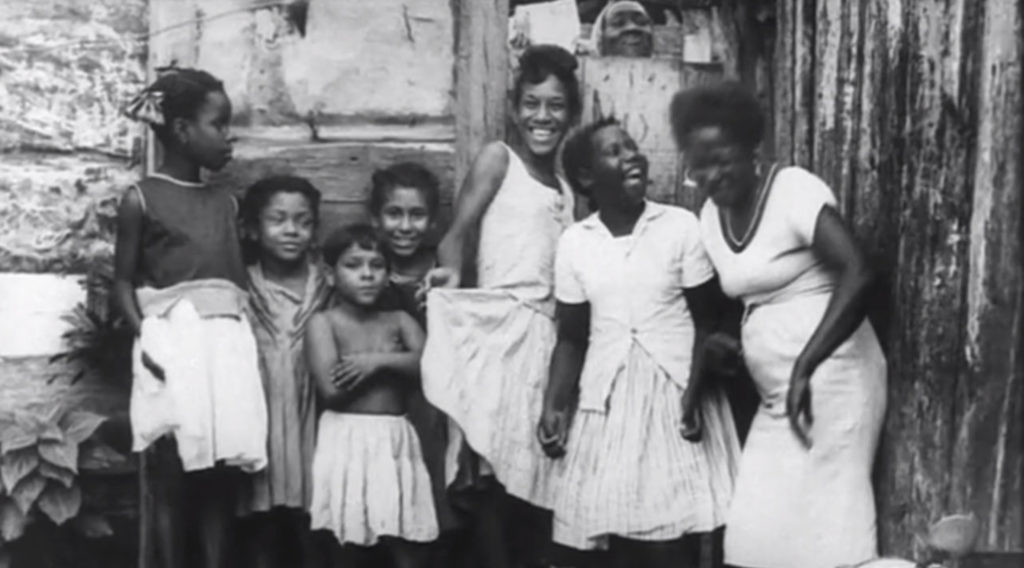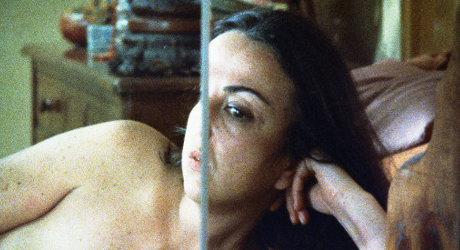2017: A Year in Review (Or Haiku)

It’s customary, come December, that we engage in a certain amount of introspection. This past year — being what it was — conducts little clarity. For us, as we’d expect for many of you, many (really, most) high points of 2017 happened in the theatre. Here, we’ve shared a list of those films from the year that […]
Editors’ Note: Varda

With five years of cléo under our belts, it seemed only right to take this issue back to our roots, our namesake, and the reason we started this journey at all: Agnès Varda. Our founding editor, Kiva Reardon, discovered Varda in a third-year film class, and the rest is herstory; as the most prominent woman […]
“Curiosity is a good thing”: An Interview with Agnès Varda

For some 50 years, Agnès Varda has worked and lived in the 14th arrondissement in Paris, in a pink-painted atelier on rue Daguerre. (Her love of this milieu is well-known: she documented her fellow inhabitants of the small street in 1976’s Daguerréotypes, and in 2003 filmed a short surrealist rom-com, Le Lion Volatil, around the iconic […]
Beyond the Photo Album: Relocating Varda’s Salut les Cubains

The English-language critical response to Agnès Varda’s Salut les Cubains, a 1963 photo-montage documentary short exploring post-revolution Cuba, has largely positioned the film as a historical stepping stone on the concurrent paths of Varda’s political engagement and filmic preoccupation with still photography. These discussions often take as their jumping-off-point Salut les Cubains’ inclusion in Cinévardaphoto […]
On the Body and Becoming: Cléo de 5 à 7

In Agnès Varda’s 1962 film Cléo de 5 à 7, cancer is mentioned enough that one begins perceiving it as a condition of existence rather than a sickness. Indeed, the film opens with an ominous diagnosis at a fortune teller: Cléo (Corinne Marchand) gets the death card in her tarot reading. The elderly seer soothes […]
The Varda Variations: (Re)introductions of the Auteure in Documenteur and Beyond

If I’m no good at pretending to be a man and no good at being young, I might just as well start pretending that I am an old woman. I am not sure that anybody has invented old women yet; but it might be worth trying. — Ursula K. Le Guin, “Introducing Myself,” The Wave […]
Photo Playing: The Archival Journey of Une minute pour une image

Agnès Varda’s practice of snapping photos has spanned nearly her entire lifetime. It served as her day job up until the success of Cléo de 5 à 7,[i] and part of her stylistic imprint as a filmmaker derives from her brilliant way of turning photographic encounters into avant-garde cinema. The three short documentaries that Varda […]
Wandering in the Presence of Women: Les dites cariatides

“Every face tells a story.” – Agnès Varda, Visages villages (2017) Across many of her works, in her decades-long filmmaking career, Agnès Varda has searched for stories in people’s faces, histories embedded in the concrete textures of places, locations and architecture. Her films create topographies of the human experience, always—directly or otherwise—through a feminist lens. […]
“Agnès’s Fantastic Truths”: A Varda Comic Strip

Our cover artist Alejandra Espino explores and reflects upon the ways Agnès Varda shapes narratives when deciding to tell a story. By using small details, Varda transforms the seemingly minute to play with traditional ideas regarding memory, biography and even truth.
The Gift of Collaboration: A Roundtable on Agnès Varda

Filmmakers Alexandra Hidalgo, Sofia Bohdanowicz and Caroline Leone and actress Indra De Bruyn discuss their shared love of the works of Agnès Varda—including La Pointe Courte, Le Bonheur, Cléo de 5 à 7, Vagabond, The Gleaners and I and The Beaches of Agnès—and the lessons they have learned from her craft. Alexandra: The first Agnès […]
Editor’s Note: Home

“You think you had it rough? I didn’t find this place, I had to build it.” -Vienna (Joan Crawford), Johnny Guitar The word “home” conjures images of an ethereal space, with pies on windowsills and white lace curtains blowing in the breeze. It’s where the heart is. Yet as Vienna reminds us in Nicholas Ray’s […]
Female Homelessness in Agnès Varda’s Vagabond and Kelly Reichardt’s Wendy and Lucy

In contemporary North America, female homelessness remains largely an invisible phenomenon. Out of sight, women are also proverbially out of mind, which silently suggests that economic and sociological constraints don’t affect women in the same radical manner as men; that women aren’t displaced, forced to relocate for work, or faced with precarious housing. Two films—with […]
